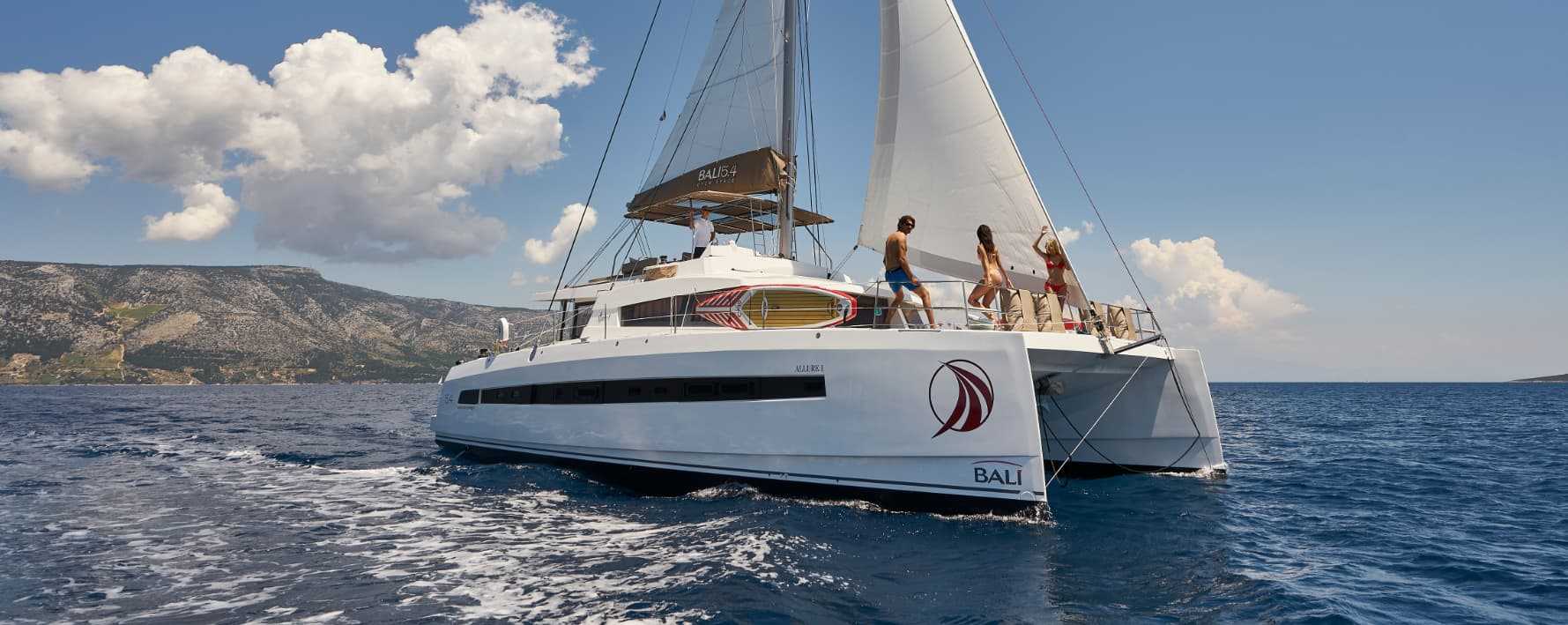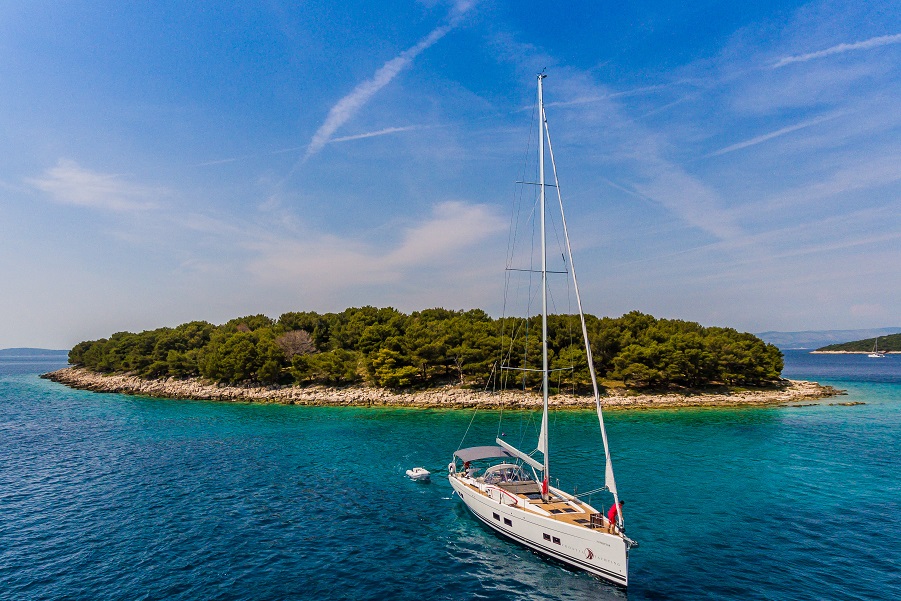Sailing Safety Tips: What To Do if You're Caught in a Storm?

Sailing truly is that blissful getaway you see enhanced in films, where the sea sweeps you off of your feet and into a paradise sprinkled with salt water, sun, and summertime serenades. With sundresses swaying in the calm breeze as your sailboat slides on the still sea, it's hard to imagine anything going awry when sailing, but that doesn’t mean it can’t happen. Especially when the unmistakable Adriatic ‘nevera’, ‘bura’ and ‘jugo’ winds come out to play.

While nevera may sound like something pleasant, it’s disguised as a Croatian word for a sudden and unexpected squall with violent westerly winds that blow in no constant direction. Other winds, like the infamous bura, are praised on land for clearing your head and the sky, though at sea are unpredictable, rapid, and dangerous for amateurs. On the other hand, Jugo makes us irritable from its balmy and heavy blows, but in turn allows for high speeds when sailing.
While any change in weather should cause for alarm, if your sailing trip is interrupted by the stormy nevera, forceful bura, or feisty jugo winds, it is especially crucial to know the best boat protocol to ensure you and your crew stay safe and armed to take on the storm. Our sailing safety tips should help you do just that. Listen carefully…
First things first - skipper sailing safety tips during a storm
Whether an experienced member of your group is manning the boat or you’ve hired a seasoned skipper for your travels, a few decisive sailing safety steps have priority when taking on the storm.
We may be jumping ahead here, but every seafarer relies on the weather, meaning there is a good chance they will know if a storm is in the cards during your sailing trip. In the event you are expecting a storm, it’s good to map out a backup itinerary with your skipper including details on potential mooring places and berths that will serve as Plan B. Even though some storms are sudden and last for only 20 minutes, they can be aggressive and quite distressing, so having an alternative itinerary in mind is always the best route to take.
And if you know a storm will hit the day you’re expected to sail from Point A to B? If you’re already docked somewhere safe, the decision is simple - just stay put. Of course, it’s always a good idea to download the best boating apps out there, many of which come with built-in weather forecasts and push notifications that alert you if anything nasty is coming your way. While your skipper likely uses these apps as part of their sailing bible, it couldn’t hurt for you to be extra prepared, too.
When you are already on board, however, there are some precautions you’ll need to take the second the storm hits. Firstly, you’ll want to make sure you slow down the boat. Namely, once you first notice that a storm is approaching or winds are developing at a more rapid pace, you’ll want to slow down the boat swiftly yet safely so as not to startle anyone in your group. When sailing in rough seas, it is important to make sure your boat maintains enough power to make headway and steer against the sea. You’ll also want to make sure your boat keeps at a pace that does not exceed the movement of the sea but that it goes the other way around and moves slow enough for the sea to outrun the boat. This is a critical sailing safety tip to keep in mind as exceeding the speed of an already violent sea runs the risk of your boat heeling too far to one side, or capsizing, ultimately forcing you to lose control. But don’t fret - slowing down the boat immediately guarantees a more comfortable ride for your group, no matter how daunting it may look outside.
Another fundamental tip in navigating storms at sea - steer your boat at a 45-degree angle when sailing towards the marina. Not only is this the safest way to ensure you make it to shore, but by forcing the head of the bow into the waves at a 45-degree angle, you’ll also dodge the intensity of the waves crashing onto the boat! This is a good idea for obvious reasons, and will certainly help you maintain your cool.
Sailing safety tips for your group - what can YOU do during a storm?

While many of these tips may seem like common sense, your sharp thinking may not kick into gear the second you get caught in a storm, so it’s good to use our sailing safety tips as a refresher before hopping on board.
Perhaps the most crucial of all - stay calm and trust your skipper. Overreacting in this situation will help no one and only heighten an already alarming situation for most. Instead, follow your skipper's orders and do your best to keep your composure. Chances are, this is not the first storm your skipper has tackled, and it certainly won’t be the last. They’ll likely have some anti-anxiety tricks up their sleeve for you to feel at ease.
And to absolutely guarantee your sailing safety? You’ll want to head for the lifejackets once you notice an abrupt change in weather. Because you don’t know the severity of the storm, it’s vital that you and your crew are aware of where the lifejackets are located on the boat, which your skipper should explain during your sailing safety precaution meeting once you first arrive on board. In the unlikely event that someone may fall overboard, your lifejacket becomes your lifeline, no matter how experienced a swimmer you may be. The reality is that no storm cares about your swimming skills, and no seasoned swimmer can tackle the unrelenting sea during a storm. Furthermore, having harnesses readily available and attached to the cleats or tie-offs of your boat is a dependable way to ensure everyone is secured onboard!
And because the choppy sea will rattle everything in its way? It is a no-brainer, but when the boat rocks, everything in it will likely drop and could ultimately injure you or your loved one. Think ahead and quickly stow all objects and gear that could potentially harm anyone onboard, from glassware and knives in the kitchen to overhead luggage or larger items. By doing so, you can avoid a potentially fatal outcome and certainly prevent a nasty bruise as a sailing souvenir.
Another quick sailing safety tip? Close all windows and fasten all latches! No one wants water to flood the boat during a storm, potentially damaging your electronics and belongings and making the inside of the boat unsafe and slippery. Furthermore, ensuring that your windows are closed also means your cabins won’t flood, otherwise causing the boat to weigh down, which could run the risk of sinking. Don’t overlook this essential yet straightforward sailing safety tip when navigating a storm. You’ll want a dry place to sleep when all is said and done.
While a lot of this may seem like common sense, you’d be surprised at how often safety measures are not followed or taken seriously on board, causing even more hazardous situations than the storm itself. In an effort to keep you and your crew safe through the squall, keep calm so you can carry on sailing - the worst of it will be over before you know it.
















